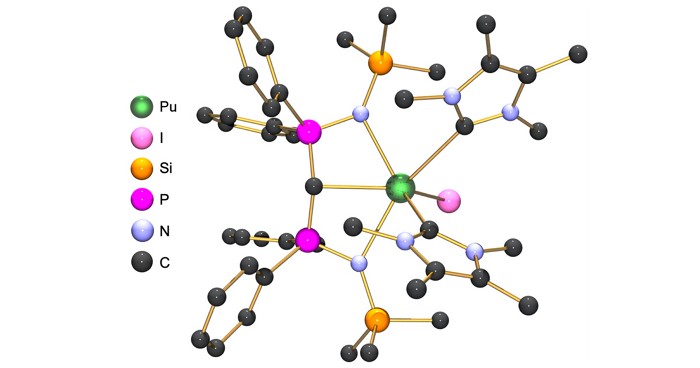Advertisement
Grab your lab coat. Let's get started
Welcome!
Welcome!
Create an account below to get 6 C&EN articles per month, receive newsletters and more - all free.
It seems this is your first time logging in online. Please enter the following information to continue.
As an ACS member you automatically get access to this site. All we need is few more details to create your reading experience.
Not you? Sign in with a different account.
Not you? Sign in with a different account.
ERROR 1
ERROR 1
ERROR 2
ERROR 2
ERROR 2
ERROR 2
ERROR 2
Password and Confirm password must match.
If you have an ACS member number, please enter it here so we can link this account to your membership. (optional)
ERROR 2
ACS values your privacy. By submitting your information, you are gaining access to C&EN and subscribing to our weekly newsletter. We use the information you provide to make your reading experience better, and we will never sell your data to third party members.
Chemical Bonding
Crystalline dication defies the octet rule
Doubly oxidized carbene has only 4 valence electrons
by Bethany Halford
September 20, 2023

The first example of a stable, doubly oxidized carbene has been made by chemists in pursuit of octet-rule-defying molecules. Most carbon atoms possess 8 valence electrons, which is why they are said to obey the octet rule. But the new dicationic compound features a carbon with only 4 valence electrons—a feat once thought impossible.
“If I read somewhere, ‘such a compound cannot exist,’ I want to make it,” says Guy Bertrand, a chemistry professor at the University of California San Diego, who led the research project with postdoctoral fellow Ying Kai Loh.
Stable carbenes—species that feature a carbon with 6 valence electrons instead of the usual 8—were considered chemical curiosities when they were first made in the 1980s. But in the intervening years, chemists have found them to be useful tools in organometallic and materials chemistry.
“My research is basically driven by the fundamental desire to make some cool molecules,” Loh says. “We were wondering whether we can further deviate from the octet rule by undressing the carbene by removing its nonbonding electrons,” Loh says.
To do so, the chemists created a carbene with bulky substituents that could also electronically stabilize the charge of the dication. They found they couldn’t simply remove the nonbonding electrons one at a time because doing so created a radical cation that reacted with the solvent. Instead, they had to oxidize a carbene and then remove an oxide anion, which left the carbene carbon without any nonbonding electrons.
The resulting dication is crystalline with two counter anions, proving unequivocally, that the carbene is doubly oxidized, Loh says. It is also a rare example of a carbon-based Lewis acid and can pluck anions such as methoxide, chloride, and cyanide from molecules (Nature 2023, DOI: 10.1038/s41586-023-06539-x).
Hansjörg Grützmacher, an expert in reactive species at the Swiss Federal Institute of Technology (ETH), Zurich, who was not involved in the research, calls the work “a true breakthrough in carbocation chemistry.”
“The beauty of this work lies in the fact that it looks so simple. So simple in fact, that one may ask the question why it took so long to make this compound,” Grützmacher says in an email. “It is the experience and instinct the Bertrand group has developed through decades of intensive research that allowed the successful preparation of this species.”
When asked about what doubly oxidized carbene might be used for, Bertrand says, “I don’t know. It’s just a fundamental discovery.” But he suspects that the work will inspire applications, just like the first stable carbenes did 35 years ago.



Join the conversation
Contact the reporter
Submit a Letter to the Editor for publication
Engage with us on Twitter